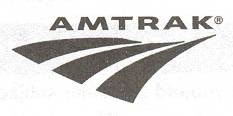Wednesday, October 29, 2008
Wheeling West Virginia
This 1908 structure was noteworthy among West Virginia Passenger Train stations both then and now. At one time it functioned as the largest "Terminal" in the state and the busiest one as well. But maybe the term "Terminal" needs a little explanation.
As I understand it, a Passenger Station (or Depot) has passenger trains that may start or end at the structure. But it also will have trains, indeed the majority, that start or stop elsewhere but pause at this particular structure as part of their regular schedule. A "Terminal" on the other hand is noted primarily for being a place where most of the trains either begin or end their routes. There may be through trains pausing in route, but they do not comprise the majority of the traffic seen at the station.
One of the peculiarities of West Virginia Railroads, is that most of them are in the process of going from someplace and going to a different place. Thus in the far south you have the old Norfolk and Western line (now Norfolk Southern). It runs from Cincinnati Ohio to Norfolk Virginia. Passenger trains using the main line stopped at several places, but except for the occassional branch local up some hollow in the southern coal fields, there were few trains that stopped and/or ended at any of these stations.
In the south central area you have a collection of lines which were operated by the Chesapeake and Ohio Railway (now CSX). The main line goes from Cincinnati Ohio in the west, to Tidewater Virginia in the east. However, it had numerous branches serving various mines up various hollows in the area that became known as the Kanawha Coal Fields. Again, as with the Norfolk and Western, there were a few local trains, many of them mixed" (combinations of passengers and freight), but most C&O passenger trains at any one station, were through trains.
Just north of that line, you did have the only lines that "ended" in West Virginia. These lines, which actually connected and thus made through service for freight possible, were the Kanawha and Michigan (later New York Central, later Penn Central, later Conrail, and now Norfolk Southern), and the Virginian (later Norfolk and Western, now Norfolk Southern). They did have a "Terminal" in Charleston WV that served the Kanawha and Michigan (later New York Central), the Virginian, and the Elk River line of the Baltimore and Ohio (originally built as the Coal and Coke Railroad). However, on none of these lines was passenger traffic ever a major concern.
Still further north you had the two B&O lines, the "Old Main" (the original line completed in 1852) that ran up to Benwood and Wheeling WV, and the early "branch line" constructed as the "Northwestern Virginia Railroad" (later known by the B&O as the "National Limited Line). The eastern part of this route (through Clarksburg and Fairmont WV) still exists. The western part has been abandoned. The Clarksburg-Parkersburg section has become The North Bend Rail Trail. Again, as with the Norfolk and Western and the C&O, these lines had some branches, and these branches had some "local" passenger service which started and ended at various points. But again, as with the previous roads mentioned, trains serving these branches were not as numerous or as prominent at any particular station as the through passenger service.
Finally, in the "northern panhandle" section of West Virginia there was one more East West route. This was the Pennsylvania Railroad line that went from Pittsburgh to Columbus. It made only one station stop, Weirton WV.
With all these east-west lines, there were only 2 lines that went north-south, and one of them went only part way. There was a line in the east that consisted of the Western Maryland, down through Elkins and Durbin, where it met up with the Greenbrier Branch of the C & O. This line ended at Ronceverte WV. However, passenger traffic on this line was minimal though for a time a north-south passenger connection did exist between the 2 roads. The other north-south line was the B&O line which hugged the eastern bank of the Ohio River, all the way from above Weirton, down to Huntington WV. And this is where the above "Terminal" comes into place. For this line did see a lot of local traffic between points on the river.
The Wheeling Terminal was the busiest train "terminal" in West Virginia when measured in terms of the number of trains that either started, ended, or stopped en route. Further, it had more trains starting or ending than an other Passenger Train facility in West Virginia. At one point in the operational history of the B&O there were 19 trains that started, ended, or paused at this station. Historically, this made perfect sense. Because the originally projected western terminous for the B&O in 1828 was to be "Wheeling." Now once Wheeling was reached, the B&O started trying to cross the Ohio. In these efforts they met some resistance from the government of the state of Virginia, and . . . as they like to say, the rest is history.
Today, the B&O tracks through Wheeling, both the east-west line which went from Pittsburgh across the Ohio River and on to Zanesville and points beyond, and the north-south Ohio River line, have been adandoned and the tracks pulled (in the case of the Ohio River line, they are in place south of Moundsville WV). And obviously, this station no longer functions as a railroad terminal. Instead, it is part of the campus of the Northern West Virginia Community College. (Incidentally, I took this shot from the 2nd floor of West Virginia's Independence Hall, where the state was formed in 1863).
On a more personal note: I notice I have a follower, Ed. Welcome, I hope you enjoy this site as much as I enjoy posting to it.
Subscribe to:
Post Comments (Atom)




No comments:
Post a Comment